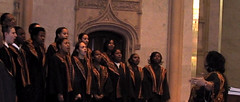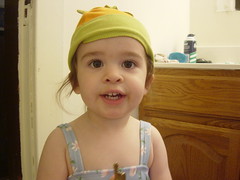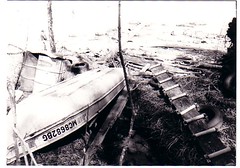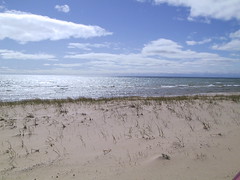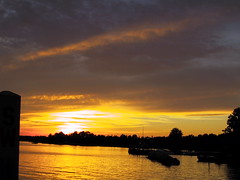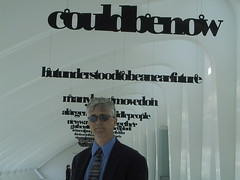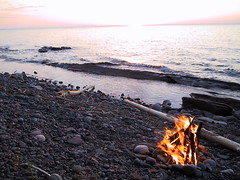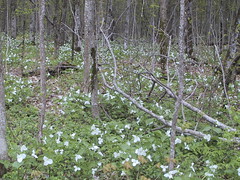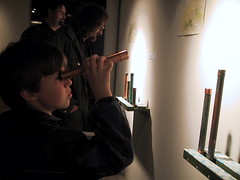By James Prichard
ASSOCIATED PRESS
8:35 a.m. May 31, 2005
GRAND HAVEN, Mich. – After seeing Vince Deur's new movie, surfers looking for the next hip spot to hang 10 may be inspired to head for the West Coast – of Michigan.
The 38-year-old filmmaker hopes his documentary, "Unsalted: A Great Lakes Experience," will expose what could be the nation's best-kept surfing secret: Under certain conditions, great waves can be found in the Upper Midwest.
The 56-minute film, which documents 40 years of Great Lakes freshwater surfing, debuts this week in California. Its Michigan premiere will be at a free outdoor screening on June 9 at the Waterfront Film Festival in Saugatuck.
Deur, a lifelong resident of the Lake Michigan summer resort town of Grand Haven, has, since age 14, spent countless hours surfing the lake.
"When you grow up surfing here and you go to other places, no one believes you when you tell them you can go surfing in a lake," he says.
Deur's obsession with the sport almost cost him his life while he was attending Northern Michigan University in Marquette.
The film opens with dramatic footage that he videotaped in November 1990, when he nearly drowned while surfing Lake Superior near Whitefish Point.
"I just remember being scared the whole time," he recalls while taking a break in his Grand Haven production studio.
While paddling on his board, he became caught in a rip current. After spending about an hour stroking futilely toward the shore – "I know now you need to swim parallel to it," he says – Deur found himself suddenly and inexplicably released from the current's grip.
When he was safely back on dry land, he breathlessly pledged on camera that he would someday make a film touting the wonders of surfing the Great Lakes.
"Unsalted" segues into a history of Great Lakes surfing, incorporating home movies and other film shot as far back as the 1960s that Deur culled from various sources.
As the film continues into the present day, it depicts professional surfers as well as local amateurs riding waves at various sites throughout the lakes. Deur shot this footage himself – nearly 150 hours of it – over the course of several years, often bringing in pros from California who knew little, if anything, about Great Lakes surfing.
Deur says people surf all five of the big lakes. His movie not only captures these enthusiasts in action but also explores why they do it.
Surfing the lakes isn't new. It's just that most people – including many who live near the water – aren't aware that it has been going on. Surfers have gotten together and formed groups and held tournaments for years. There are books and Web sites devoted to the subject.
"You just don't see people doing it, mostly because when the weather is good for surfing, there's no one at the beach," says Chicago author P.L. Strazz, who has surfed Lake Michigan for about 10 years and has written a book titled "Surfing the Great Lakes."
He estimates that between 500 and 750 people surf the lakes at least once per year, with most of the activity about equally divided between Lakes Michigan and Erie, followed in order by Ontario, Superior and Huron.
It's a solitary pursuit, not only because few people do it but also because the waves are at their best when the weather is at its worst.
"It's conceivable that you could be the only person surfing on a lake at any given time," says Strazz, 38.
Although most summers have a few days that are well-suited to surfing the Great Lakes, the conditions greatly improve during the fall and early winter. That's when storms and strong winds churn the lakes and create dangerous waves that sometimes reach heights of 10 feet or more near the shore.
Water temperatures dip into the 30s and 40s at these times of the year, so insulated wet suits are a necessity.
Generally, the longer a weather front travels along a lake, the larger the waves it will generate at the far end, Deur says. Some of the best waves he has seen have been near Manistique, on the northern side of Lake Michigan in the Upper Peninsula, and in Ontario's Alona Bay, along the southeastern shore of Lake Superior.
While shooting his film, he often monitored lake and weather conditions by way of the Internet. If he felt the conditions were right, he'd jump into his van with his Betacam and head for Sheboygan, Wis., or Buffalo, N.Y., or wherever the waves were likely to be cresting.
David Vanderveen, 36, a childhood friend of Deur and fellow surfer who now lives in Laguna Beach, Calif., says the film, which he helped finance, is creating a buzz in surfing circles.
"What's cool and fun is freshwater surfing near cornfields," says Vanderveen, who owns a beverage company called XS Energy Drink. "It's the new, new thing."
The world premiere of "Unsalted" will be Friday in Newport Beach, Calif., followed by engagements at theaters in other parts of California, Texas, Florida and along the East Coast.
––



